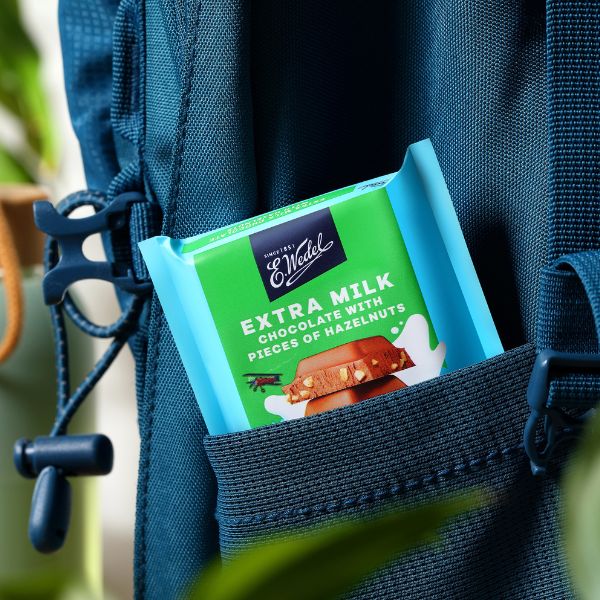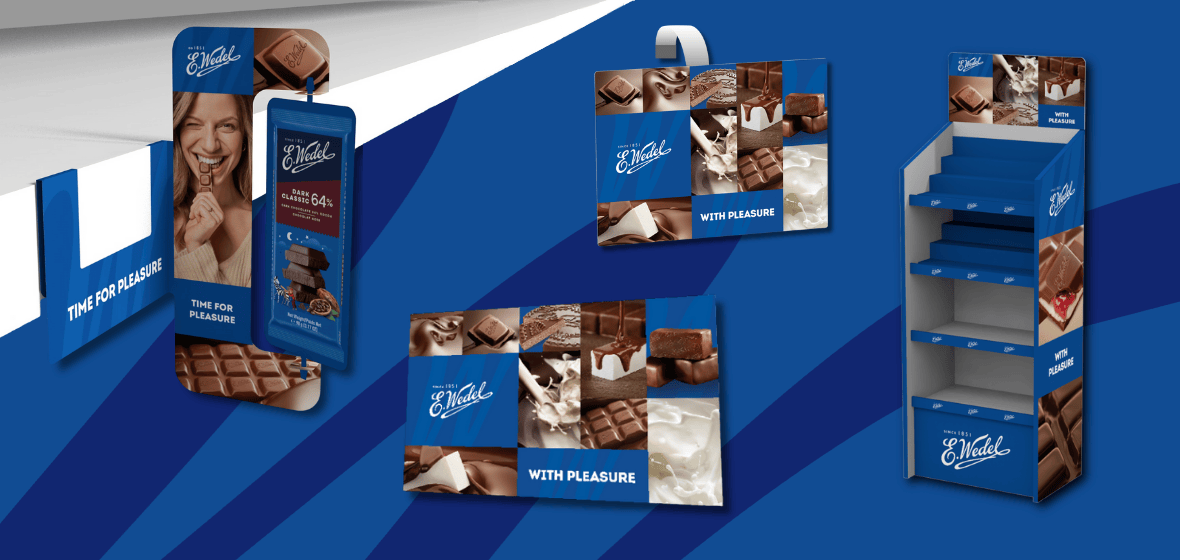Data-driven retail. How to boost chocolate sales with insights?
In today’s competitive FMCG environment, retail success is no longer driven solely by product quality or price. Instead, it is the ability to understand consumer behavior through data that separates thriving businesses from the rest.

Nowhere is this more visible than in the confectionery sector, where shopper decisions are highly emotional yet influenced by a growing range of digital touchpoints.
For chocolate brands, leveraging data-driven insights offers retailers and distributors the ability to optimize assortment, strengthen promotions, and create shopping experiences that truly resonate with consumers.
Why do chocolate insights matter?
Chocolate is a universal indulgence - consumed by people of all ages, in almost every culture. It is both a daily treat and a gift for special occasions. This dual role makes it a unique category, where data reveals powerful insights into seasonality, shopper missions, and consumption occasions.
By analyzing sales data, shopper behavior, and category performance, retailers can answer crucial questions such as:
-
Which chocolate formats (countlines, tablets, pralines or gifting assortments) perform best in specific channels?
-
How do consumer preferences differ between weekdays and weekends, or between seasons?
-
What role does chocolate play in cross-category missions, e.g., pairing with coffee, wine, or bakery products?
The answers allow retailers to make informed decisions that directly impact sales performance.
 Assortment optimization through data
Assortment optimization through data
A data-driven approach to assortment ensures that shelves reflect not only national trends but also local shopper needs. For example:
-
In urban convenience stores, shoppers often reach for smaller impulse formats - chocolate countlines, handy 40g tablets, or Chocosqueeze pouches.
-
In supermarkets and hypermarkets, large format tablets over 200g, praline assortments, and seasonal gifting ranges perform strongly.
-
Online platforms see growing demand for premium assortments and gifting packs, particularly around holiday periods.
Using point-of-sale data and shopper analytics, retailers can adjust shelf space allocation to maximize both penetration (number of buyers) and frequency (repeat purchases).
Data as a compass for seasonal peaks
Chocolate is one of the most seasonal categories in FMCG. Christmas, Easter, Valentine’s Day, and Mother’s Day represent the biggest global peaks. In Poland, occasions such as Grandparents’ Day and Children’s Day also significantly influence sales.
By tracking historical sales data and overlaying it with consumer insights, retailers can predict demand more accurately, ensuring optimal stock levels and targeted promotions. For example:
-
In the run-up to Christmas, praline assortments and festive chocolate bars take center stage.
-
Around Valentine’s Day, gifting products such as heart-shaped Creamy pralines or Ptasie Mleczko® in seasonal packaging become top sellers.
-
During summer months, demand for lighter treats, such as frozen Ptasie Mleczko® or Chocosqueeze for Children may fluctuate, requiring careful planning.
Promotions powered by insights
 Data allows retailers to move beyond one-size-fits-all discounts. Instead, they can design personalized and occasion-based promotions that deliver higher ROI.
Data allows retailers to move beyond one-size-fits-all discounts. Instead, they can design personalized and occasion-based promotions that deliver higher ROI.
For instance:
-
- Price promotions can be targeted toward impulse products like chocolate countlines or tablets to drive traffic.
-
- Gift-with-purchase campaigns can highlight pralines and premium assortments in the lead-up to holidays.
-
- Cross-category activations (e.g., pairing E.Wedel pralines with sparkling wine or coffee) can create new shopping missions and boost basket value.
Retailers who align promotional calendars with data-driven seasonal peaks consistently achieve stronger results than those who rely on generic discounting.
The role of digital & e-commerce data
As online sales of chocolate continue to grow, digital insights are becoming critical. Retailers can track:
-
Which product images and descriptions drive the highest conversion.
-
How banner placement and landing pages influence click-through rates.
-
The effectiveness of online-exclusive promotions, such as bundle offers or limited editions.
By combining online behavioral data with offline POS data, retailers can create a 360-degree view of shopper behavior. This holistic approach allows them to align messaging across all channels, ensuring consistency and maximizing impact.
POSM and in-store data integration
Data-driven retail does not end online. By analyzing the performance of POSM, displays, and in-store activations, retailers can refine execution in real time.
For example, retailers can measure:
-
Which premium displays generate the highest uplift in sales.
-
How QR codes on POSM (leading to digital coupons or recipes) drive consumer engagement.
-
Whether holiday-themed zones increase dwell time and impulse purchases.
This integration of marketing data with sales results creates a powerful feedback loop, allowing constant improvement of retail execution.

Building long-term growth with insights
At its core, data-driven retail is not about short-term gains. It is about building long-term category growth. For chocolate, this means:
-
Strengthening the role of chocolate as both an everyday treat and a gift for meaningful occasions.
-
Identifying white spaces where innovation can drive incremental sales.
-
Supporting retailers and distributors with tailored insights that match local shopper preferences.
For brands like E.Wedel, working closely with partners to share insights and co-create promotional strategies, ensures that chocolate remains one of the most dynamic and profitable categories in FMCG.
Why chocolate sales data matters
In a market where consumer preferences evolve rapidly, data is the key ingredient for sustainable retail growth. By leveraging chocolate insights - from seasonal patterns to shopper behavior - retailers can design assortments, promotions, and activations that not only boost sales but also create emotional connections with shoppers.
With a portfolio that spans from iconic Ptasie Mleczko® to premium pralines and innovative chocolate bars, and a commitment to providing partners with actionable insights, E.Wedel demonstrates how tradition and data can work hand in hand to shape the future of retail.
In today’s retail landscape, it’s not only about selling chocolate - it’s about using data to create sweeter opportunities for growth.
